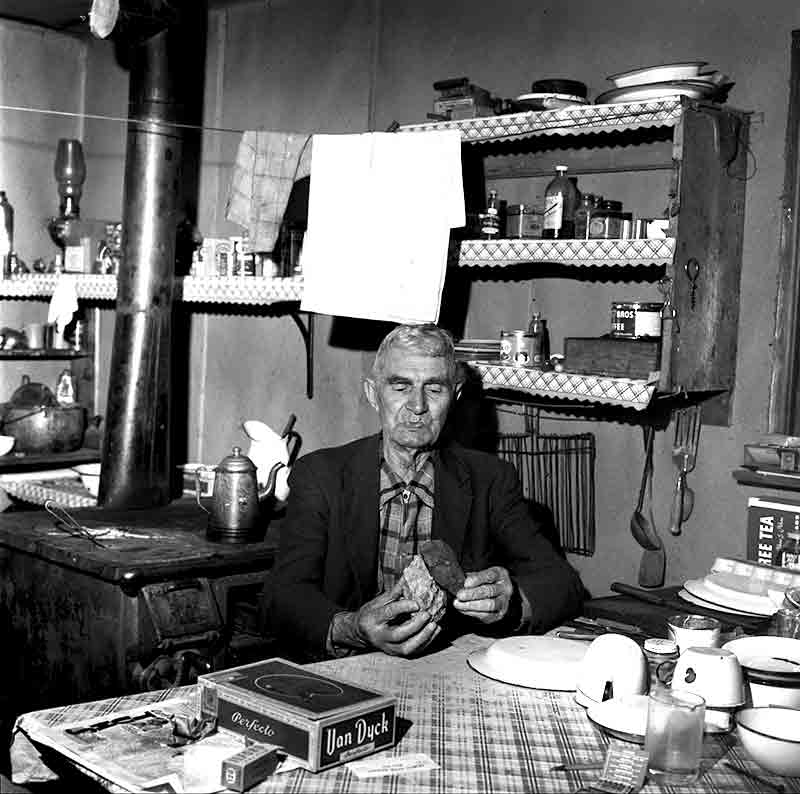The Alaska Gold Rush was a period of intense gold prospecting and mining activity in Alaska, that began in the late 1800s and lasted until the 1900s. It was sparked by the discovery of gold deposits in the region, which attracted thousands of prospectors and miners from all over the world.

Charlie Schick could still slap himself today, when he only thinks how much easier he could have earned his money in all those years, if he had patented his invention of an airplane ski in 1900. But even so, he is not a poor man today at 87.
German prospector's fortune
German photo reporter Peter Bock-Schroeder was on assignment in the small town of Dawson Creek, located in the heart of the Canadian wilderness, when he came across German emigrant Charly Schick. Schick had made his way to Dawson Creek during the height of the Gold Rush, hoping to strike it rich like so many others before him.
As Bock-Schroeder listened to Schick's stories of his adventures in the rugged landscape, he was struck by the emigrant's resilience and determination. Despite the many challenges and setbacks he had faced, Schick had never given up on his dream of finding gold.
The Gold Rush in Dawson Creek was a period of intense gold prospecting and mining activity in the late 19th and early 20th centuries. It was sparked by the discovery of gold deposits in the region, which attracted thousands of prospectors and miners from all over the world.
More than 100,000 people from all social classes set out on a long, life-threatening journey through impassable, icy valleys and rocky terrain to try their luck.
Gold Rush success tale

Only a few months ago he was paid 40 thousand dollars for the sale of one of his many properties. In 1890 he arrived from Isenburg, Germany to America. He lived in the States for a few years, where he earned good dollars as a trained wheelwright, until he heard about the gold rush in Dawson Creek.
As it turned out, Schick's perseverance had finally paid off. He had indeed struck gold in the creek, and was now living a life of relative comfort and prosperity. Bock-Schroeder was fascinated by Schick's tale, and knew he had to document it for posterity.
The Gold Rush had a significant impact on the development of Dawson Creek and the surrounding area. As more and more people arrived in search of gold, the population of the town exploded, and new businesses and services sprang up to meet the demand. The Gold Rush also brought new challenges and hardships to the region, as prospectors and miners struggled to find and extract gold in the harsh and often unforgiving landscape.
Charly Schick's Dawson Creek adventure

Charlie got one of the first licenses that was necessary for staking a claim, and after a very short time had found enough gold to rest for a while. But he couldn't stand the life of a pensioner for long. Together with two other Germans he ran a gold panning business in Fairbanks. Additionally, Schick worked as carpenter and cartwright
Despite the challenges, many people struck it rich during the Gold Rush, and Dawson Creek became a bustling hub of activity and prosperity. The legacy of the Gold Rush can still be seen today in the town's rich history and cultural heritage.
Prosperity in the wilderness

It was an incredibly hard life which had to be endured in the early days here at the northernmost point of the American continent.
As the Gold Rush began to wane in the early 20th century, the focus of the region shifted from gold mining to other industries, such as agriculture and forestry. However, the memory of the Gold Rush lives on in the stories and traditions of the people of Dawson Creek, and serves as a reminder of the enduring spirit of exploration and adventure that has defined this region for generations.
Dawson Creek's golden emmigrant

Alaska at that time was inhabited mainly by people who either themselves, or through their ancestors descended from Northern European countries, such as Sweden, Norway, England, Holland or Germany. When people talk about the pioneers in Alaska today, they are referring in particular to the Germans. The list of people of German descent is long.
Apart from scientists and researchers, it was above all the German craftsmen, farmers and others who achieved considerable success in Alaska. At no time, not even during the two world wars, was this ever questioned by the citizens of Alaska.
German prospector's fortune

Charlie Schick, a welcomed guest at the Pioneer Hotel in Fairbanks was considered an expert in matters of gold processing.
Over the course of several days, Bock-Schroeder photographed Schick at work and at play, capturing the emigrant's rugged, determined spirit in stunning black and white images. The photos, which were later published in magazines and newspapers around the world, became an enduring testament to the enduring spirit of the Gold Rush and the indomitable human will.